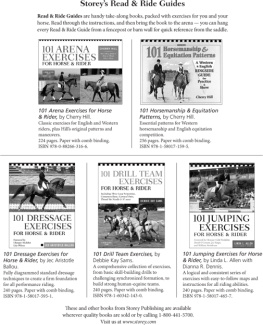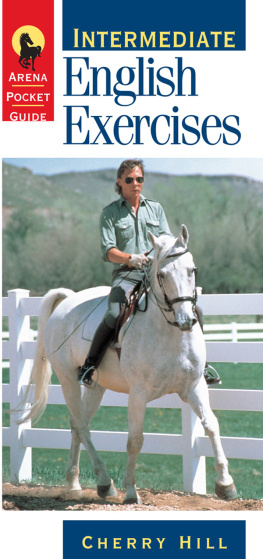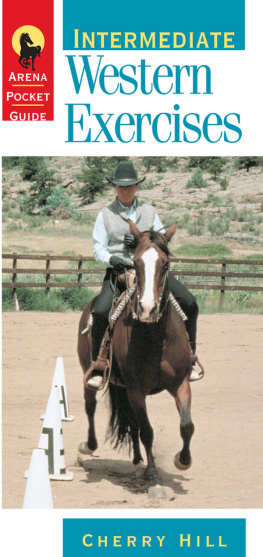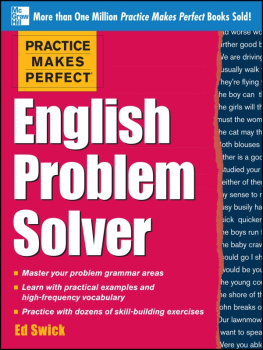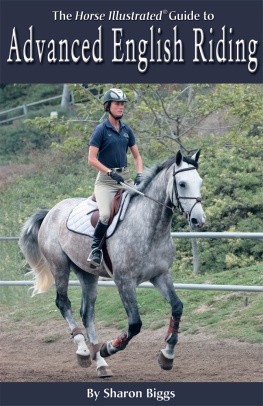Cherry Hill - Advanced English Exercises
Here you can read online Cherry Hill - Advanced English Exercises full text of the book (entire story) in english for free. Download pdf and epub, get meaning, cover and reviews about this ebook. year: 1998, publisher: Storey Publishing, LLC, genre: Home and family. Description of the work, (preface) as well as reviews are available. Best literature library LitArk.com created for fans of good reading and offers a wide selection of genres:
Romance novel
Science fiction
Adventure
Detective
Science
History
Home and family
Prose
Art
Politics
Computer
Non-fiction
Religion
Business
Children
Humor
Choose a favorite category and find really read worthwhile books. Enjoy immersion in the world of imagination, feel the emotions of the characters or learn something new for yourself, make an fascinating discovery.

- Book:Advanced English Exercises
- Author:
- Publisher:Storey Publishing, LLC
- Genre:
- Year:1998
- Rating:3 / 5
- Favourites:Add to favourites
- Your mark:
- 60
- 1
- 2
- 3
- 4
- 5
Advanced English Exercises: summary, description and annotation
We offer to read an annotation, description, summary or preface (depends on what the author of the book "Advanced English Exercises" wrote himself). If you haven't found the necessary information about the book — write in the comments, we will try to find it.
With this pocket-sized guide in hand, youll find it easy to develop and perfect your English riding skills. Cherry Hills exercises will help you hone lateral work, master collection, perfect lead changes, and fine-tune transitions and change of direction.
Advanced English Exercises — read online for free the complete book (whole text) full work
Below is the text of the book, divided by pages. System saving the place of the last page read, allows you to conveniently read the book "Advanced English Exercises" online for free, without having to search again every time where you left off. Put a bookmark, and you can go to the page where you finished reading at any time.
Font size:
Interval:
Bookmark:
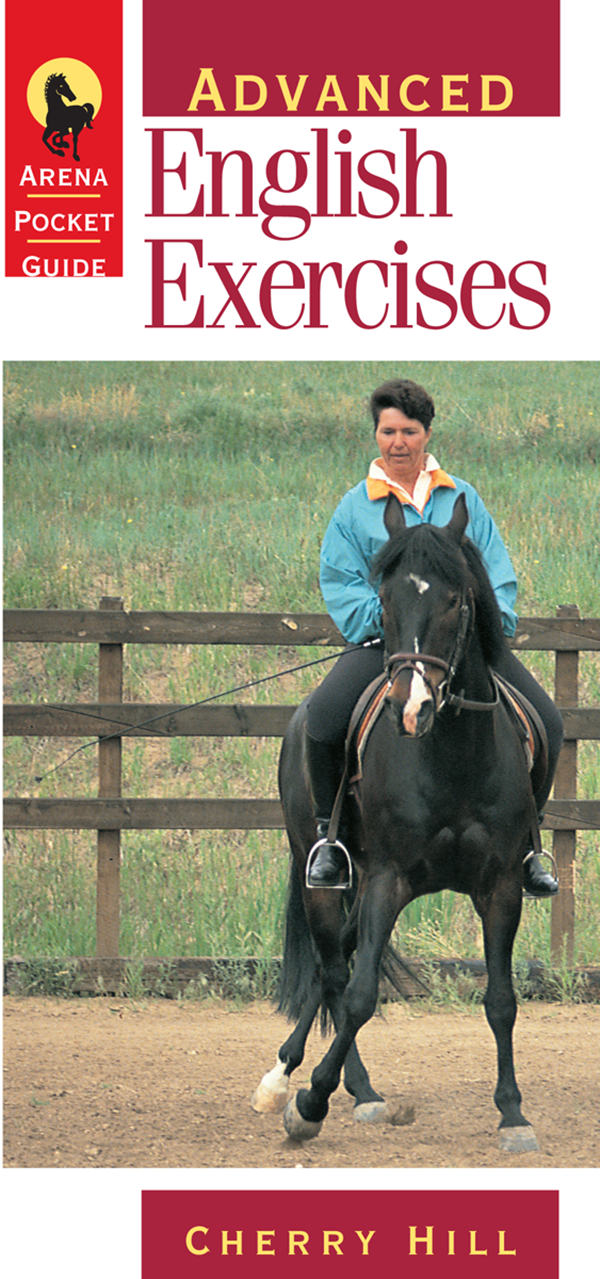
 The mission of Storey Publishing is to serve our customers by publishing practical information that encourages personal independence in harmony with the environment. Edited by Deborah Burns and Aimee Poirier Cover design by Eugenie Delaney Cover photographs by Richard Klimesh Text design by Cindy McFarland Production assistance by Susan Bernier and Jen Jepson Line drawings designed by Cherry Hill and drawn by Peggy Judy Copyright 1998 by Cherry Hill Ebook version 1.0 September 17, 2013 All rights reserved. No part of this book may be reproduced without written permission from the publisher, except by a reviewer who may quote brief passages or reproduce illustrations in a review with appropriate credits; nor may any part of this book be reproduced, stored in a retrieval system, or transmitted in any form or by any means electronic, mechanical, photocopying, recording, or other without written permission from the publisher.
The mission of Storey Publishing is to serve our customers by publishing practical information that encourages personal independence in harmony with the environment. Edited by Deborah Burns and Aimee Poirier Cover design by Eugenie Delaney Cover photographs by Richard Klimesh Text design by Cindy McFarland Production assistance by Susan Bernier and Jen Jepson Line drawings designed by Cherry Hill and drawn by Peggy Judy Copyright 1998 by Cherry Hill Ebook version 1.0 September 17, 2013 All rights reserved. No part of this book may be reproduced without written permission from the publisher, except by a reviewer who may quote brief passages or reproduce illustrations in a review with appropriate credits; nor may any part of this book be reproduced, stored in a retrieval system, or transmitted in any form or by any means electronic, mechanical, photocopying, recording, or other without written permission from the publisher.
The information in this book is true and complete to the best of our knowledge. All recommendations are made without guarantee on the part of the author or Storey Publishing. The author and publisher disclaim any liability in connection with the use of this information. For additional information please contact Storey Publishing, 210 MASS MoCA Way, North Adams, MA 01247. Storey books are available for special premium and promotional uses and for customized editions.
For further information, please call 1-800-793-9396. Storey Publishing 210 MASS MoCA Way North Adams, MA 01247 www.storey.com Contents Advanced English Exercises Arena exercises are a cross between gymnastics, meditation, and geometry. They are essential keys for discovering many important principles about training and riding. 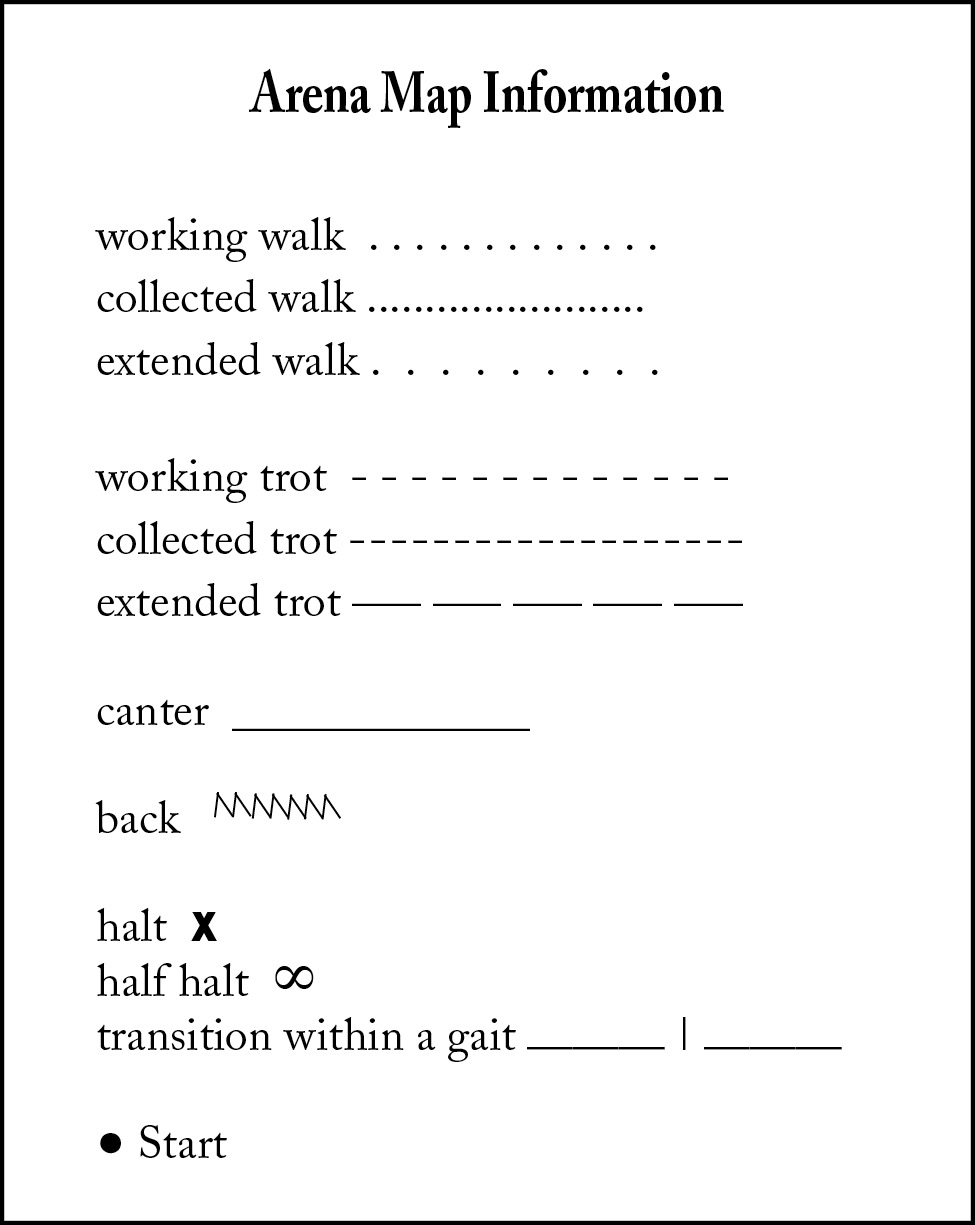 Goals Fine-tune transitions and changes of direction Master lateral work Counter-flex Shoulder in Walk pirouette Half pass Full canter pirouette Improve collection Collected trot Collected canter Volte Learn lead changes Counter-canter Flying change Remember as you practice that it is the QUALITY of the work that is most important. It is a much greater accomplishment to do simple things well than it is to stumble through advanced maneuvers in poor form and with erratic rhythm. Keep your mind in the middle and a leg on each side.How Can You Tell If the Work Is Correct? Work regularly with a qualified instructor.
Goals Fine-tune transitions and changes of direction Master lateral work Counter-flex Shoulder in Walk pirouette Half pass Full canter pirouette Improve collection Collected trot Collected canter Volte Learn lead changes Counter-canter Flying change Remember as you practice that it is the QUALITY of the work that is most important. It is a much greater accomplishment to do simple things well than it is to stumble through advanced maneuvers in poor form and with erratic rhythm. Keep your mind in the middle and a leg on each side.How Can You Tell If the Work Is Correct? Work regularly with a qualified instructor.
Ask a qualified person to stand on the ground, observe your exercises, and report to you what he or she sees. Have someone record your exercises on videotape. Then watch the tape carefully using slow motion and freeze frame. As you ride, watch yourself and your horse in large mirrors on the wall. Without moving your head, glance down at your horses shoulders, neck, poll, and eye during different maneuvers to determine if he is correct up front. Ultimately, the key is to develop a feel for when things are going right and when they are going wrong by utilizing all of the above feedback techniques.
Answer the following by feeling, not looking: * Is there appropriate left to right balance on my seat bones? Can I feel them both? * Can I feel even contact on both reins? * Is the front to rear balance acceptable or is the horse heavy on the forehand, croup up, back hollow? * Is the rhythm regular or does the horse speed up, slow down, or break gait? * Is my horse relaxed or is his back tense? * Is he on the bit or above or behind it? * Am I posting on the correct diagonal? * Is my horse cantering on the correct lead? * Can I tell when his inside hind leg is about to land? What Do You Do When Things Go Wrong? Review each component of an exercise. You may need to return to some very basic exercises to establish forward movement, acceptance of contact, or response to sideways driving aids. Returning to simple circle work will often improve straightness and subsequently improve lateral work and collection. Ride an exercise that the horse does very well, such as the walk-trot-walk transition. Work on purity and form. Perform a simpler version of the exercise.
If it is a canter exercise, try it at a walk or trot first. Perform the exercise in the opposite direction. Sometimes, because of an inherent stiffness or crookedness in a horse, you will have difficulty with an exercise to the left but no problems to the right! Capitalize on this by refining your skills and the application of your aids in the good direction and then return to the hard direction with a renewed sense of what needs to be done. I often find that doing work to the right improves work to the left.  EXERCISE 1 Counter-Flex Working trot, sitting. Right corner with normal bend.
EXERCISE 1 Counter-Flex Working trot, sitting. Right corner with normal bend.
Straight 12 strides. Counter-flex 23 strides. While hind legs continue to follow front legs and stay on the line of the exercise, the neck and head are brought to the left with a left direct rein and right supporting rein. Straight 12 strides. Counter-flex 23 strides. Straight 12 strides.
Right corner with regular bend. Straight 1 stride. Counter-flex 23 strides. Straight 1 stride. Counter-flex around the corner and for 1 stride beyond. Straight 45 strides.
Counter-flex 34 strides. Straight 1 stride. Right corner normal bend. * The counter-flex can be performed at the walk and canter. * Vary where and how long you ask for counter-flex. * Counter-flex is not a lateral movement.
The hind legs follow the front legs on their normal track. * Sometimes it is necessary to ride the counter-flex exercise as a counter-bend because as the horses nose is brought to the left in this counter-flex exercise, the hindquarters automatically want to move to the right. The rider might have to apply a strong right leg behind the girth and is in essence bending the horse around his left leg, thus in a counter-bend.  The counter-flex teaches a horse to stay up on the outside rein. For example, when tracking left, if a horse overbends to the left and avoids taking contact with the right rein, counter-flex the horse to the right. EXERCISE 2 Shoulder In Trot to the right, immediately after the corner. Perform a shoulder in right.
The counter-flex teaches a horse to stay up on the outside rein. For example, when tracking left, if a horse overbends to the left and avoids taking contact with the right rein, counter-flex the horse to the right. EXERCISE 2 Shoulder In Trot to the right, immediately after the corner. Perform a shoulder in right.
Bring horses forehand in 3035 degrees maximum so the left shoulder is in front of the right hind leg. Weight right seat bone slightly. Right leg at the girth pushes the horse forward, activates the right hind leg, maintains the position and the subsequent forward and sideways movement of the right hind, creates right bend. Left leg behind the girth prevents the left hind from stepping to the left. (Dont depend on the rail or wall to do this for you!) Left rein controls tempo and bend in the neck. Right rein guides the horse in to the right and maintains the degree of right bend.
Straighten horse by bringing forehand back to the original track. * There are three tracks in a shoulder in right: 1. Left hind 2. Right hind and left front 3. Right front * The right legs cross in front of the left legs with the right hind reaching well forward toward the left front. * If the inside rein is too strong, the horse will be overbent and will bulge on the outside shoulder making it look like a neck in rather than a shoulder in. * If the horse tilts his head (when tracking right, the right ear will be lower), it is usually because the left rein is too strong. * If the horse tilts his head (when tracking right, the right ear will be lower), it is usually because the left rein is too strong.
Next pageFont size:
Interval:
Bookmark:
Similar books «Advanced English Exercises»
Look at similar books to Advanced English Exercises. We have selected literature similar in name and meaning in the hope of providing readers with more options to find new, interesting, not yet read works.
Discussion, reviews of the book Advanced English Exercises and just readers' own opinions. Leave your comments, write what you think about the work, its meaning or the main characters. Specify what exactly you liked and what you didn't like, and why you think so.


